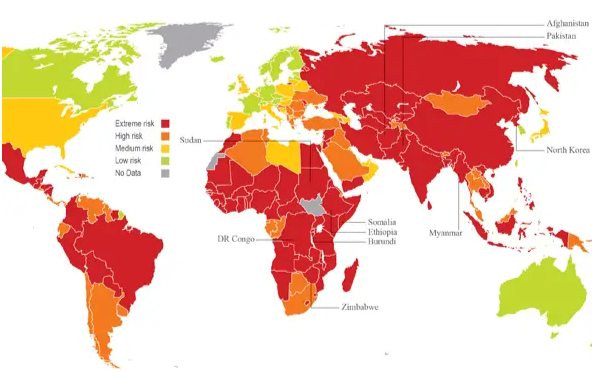The rise in child labor began around the 19th century and increased with the Industrial Revolution. Historically there were no laws or protections put in place to stop children from working in dangerous and life-threatening conditions. In the U.S., in 1908, the Fair Labor Standards Act (FLSA) established strict laws, and a minimum working age of 14. However, these rules did not apply to agriculture. Despite legal protections the question arises: If child labor is illegal, why is it still an issue?
There are a few contributing factors to this, a main one being weak enforcement of labor laws. Despite the abundance of child labor laws and regulations, they are not as thoroughly enforced as one would hope. According to the U.S.’s department of Labor’s Child Labor page, Labor laws can often be subject to interpretation, and employers often exploit loopholes.
Another factor is that families struggling to make ends meet, may need their children to take on jobs. Lack of jobs for adults may push poorer families into having their children get jobs. These families then become reliant on the child’s income. Lack of access to education directly leads to limited job opportunities which creates a need for children to bring in an income, furthering the cycle of child labor and poverty. Children are also often paid less than adults, which entices companies to hire them. Outside the U.S., other countries may not frown upon child labor, and some consider it necessary for a functioning society. Certain regions rely on a family based economy — meaning there is a strong emphasis on family based income — including reliance on children. An example of this is agriculture. Farmers typically employ their own children to work in the field which is why agriculture is not included in the FLSA. The employment of children saves them money which in some cases can be necessary to make farming profitable. According to The National Library of Medicine’s article Challenges and Perspectives of Child Labor, in certain developing countries people believe that child labor can actually be beneficial because they believe that it “increases skill development in children.”
The use of child labor in the U.S. and by companies based here is significantly more common than one may think. In fact, the U.S. Department of Labor found that, as of 2023, one to two million minors are working illegally in the U.S.. For example, some companies based in the U.S. , who operate globally, may rely on child labor overseas. Apple, Nike, and Walmart have all faced scrutiny for their supply chain practices and the unsafe working conditions in developing countries where they source materials and manufacture products. Although many companies in the United States are usually committed to following labor laws, the use of child labor by U.S. based companies typically occurs as a result of complex global networks. Companies may unknowingly source products and materials from suppliers that exploit child labor, especially in regions of the world that have fewer child labor restrictions. According to UNICEF’s child labor statistics page, in certain regions of the world, such as Sub-Saharan Africa and parts of Latin America, 25% of children ages 5-17 are engaged in child labor.
At this point in time child labor is incredibly intertwined with our society. To break this cycle, increased awareness, increased enforcement of labor laws, and conscientious consumer choices are necessary steps toward eliminating child labor from our global supply chains and society. On a global scale, many companies have made strides to strengthen legislation and raise awareness of the issue. While the future is unknown, researchers hope that the continued increase in global awareness and advocacy as well as technological advancement and increased corporate accountability may create a decline in child labor for our future. Next time you purchase a toy, clothing or an electronic device, remember, there’s a possibility part of it was made by a child.



















